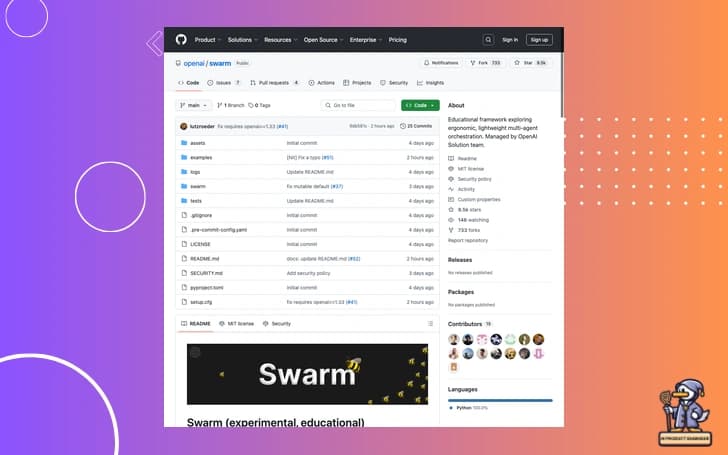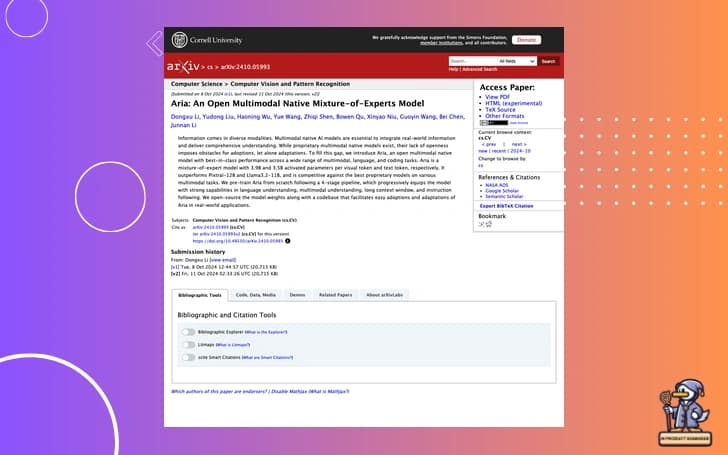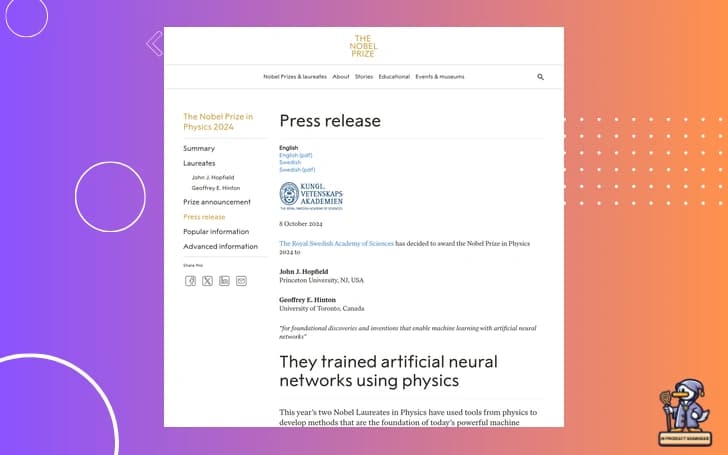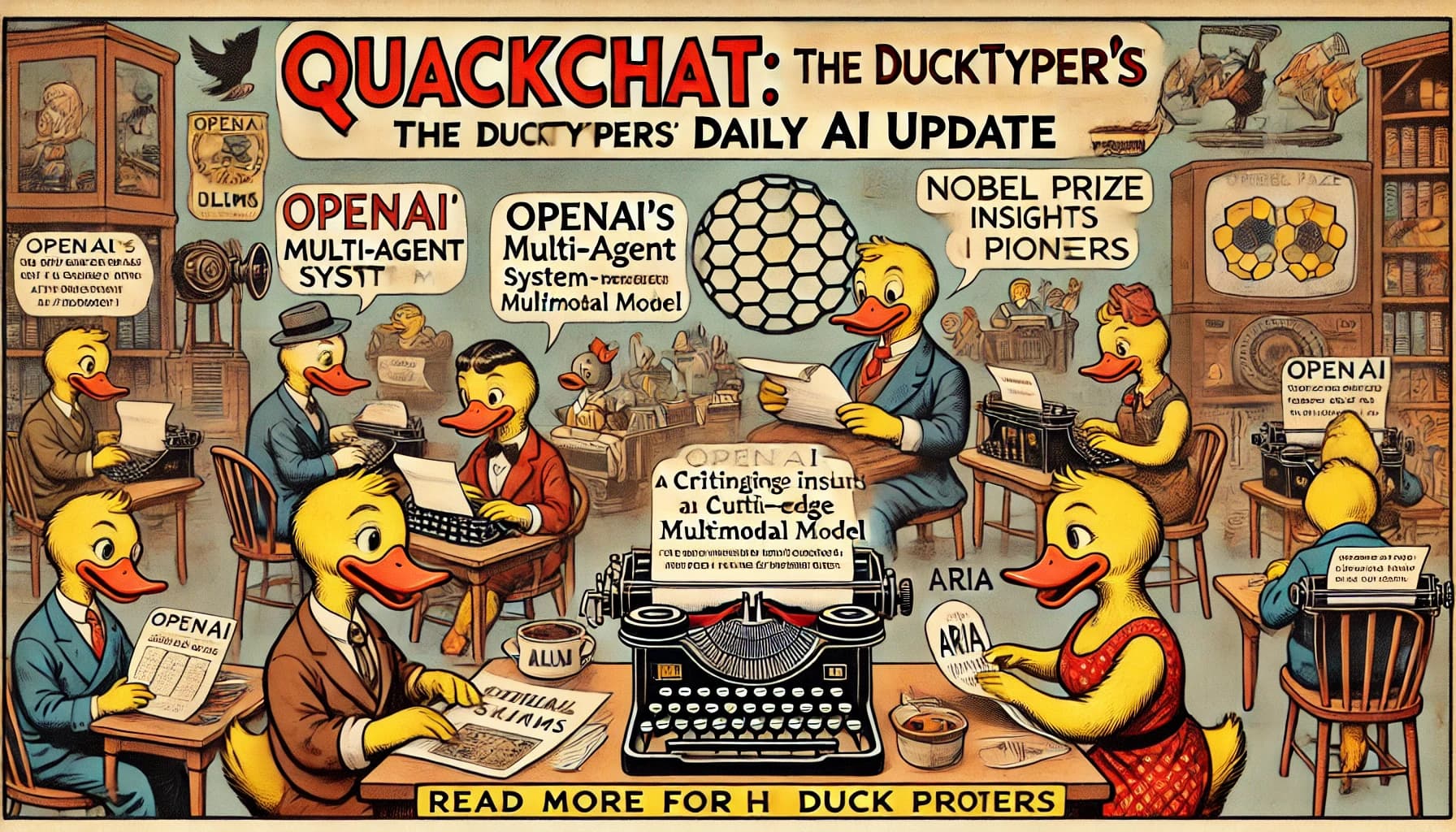🦆 Welcome to QuackChat: The DuckTypers' Daily AI Update
Hello, Ducktypers! Jens here. Today, we're diving into some developments that are shaping the landscape of artificial intelligence. Let's break it down with an engineer's perspective and see what practical insights we can glean.
🐝 OpenAI's Swarm: A New Framework for Multi-Agent Systems

OpenAI has introduced Swarm, a lightweight library for building multi-agent systems. As someone relatively new to the AI space, I find this particularly intriguing from an engineering standpoint.
Swarm offers a stateless abstraction for managing interactions between agents, which could simplify complex systems. Here's a quick pseudocode snippet to illustrate the concept:
from swarm import Agent, Orchestrator
agent1 = Agent("Task Planner")
agent2 = Agent("Executor")
orchestrator = Orchestrator([agent1, agent2])
result = orchestrator.run("Develop a new feature")This framework provides insights into agent roles and handoffs without relying on the Assistants API. It's worth noting that Swarm is still experimental, so we should approach it with cautious optimism.
Call to comment: Have any of you Ducktypers experimented with Swarm yet? What are your initial thoughts on its potential for streamlining multi-agent systems?
🌟 Aria: The Breakthrough Multimodal Model

We have talked about Aria in previous issues. In fact, this is the third time in a week if I recall correctly. But if you've missed it! Aria is a new multimodal model by rhymes_ai, and the model has taken the top spot on the Hugging Face Open LLM Leaderboard. Let's break down what makes Aria stand out:
- 24.9B parameters
- Handles image, video, and text inputs
- 64k token context window
- Pre-trained on 400B multimodal tokens
From an engineering perspective, Aria's architecture is impressive. Its ability to process multiple types of data inputs could open up new possibilities for more integrated AI applications.
Here's a simplified representation of how we might interact with Aria:
from aria import AriaModel
model = AriaModel.load("aria-24.9B")
text_input = "Describe this image:"
image_input = load_image("example.jpg")
result = model.process(text=text_input, image=image_input)
print(result)The model's release under the Apache-2.0 license is a positive move for the open-source community, potentially accelerating further innovations in the field.
Call to comment: How do you envision Aria's multimodal capabilities being applied in your AI projects? What challenges might we face in integrating such a model into existing systems?
🧠 LLM Insights: From o1-mini to Real-World Applications

There's been some buzz around o1-mini, a smaller version of the o1 model. However, it's important to approach these developments with a measured perspective. While o1-mini shows promise, it seems to struggle with simpler problems compared to its larger counterpart, o1-preview.
This brings us to an important point in AI development: the balance between model size and practical application. As engineers, we need to consider factors like:
- Computational resources
- Inference speed
- Task-specific performance
- Deployment constraints
Here's a simple decision tree we might use when choosing between different model sizes:
if task_complexity == "high" and resources_available == "abundant":
use_large_model()
elif task_complexity == "medium" and deployment_environment == "edge":
use_medium_model()
else:
use_small_model()
Call to comment: What strategies have you found effective in choosing the right model size for your projects? How do you balance performance with practical constraints?
🔬 Industry Deep-Dive: Nobel Prize in Physics for AI Pioneers

We can't stop emphasizing it: The Nobel Prize awarded to pioneers in the world of machine learning is massive. As you may recall, Sir John J. Hopfield and Sir Geoffrey E. Hinton were awarded the 2024 Nobel Prize in Physics for their groundbreaking work in AI and neural networks. This accolade underscores the profound influence of machine learning on modern science.
As engineers, we stand on the shoulders of these giants. Their foundational work has paved the way for the technologies we work with today. It's a reminder of the importance of understanding the theoretical underpinnings of our field.
Call to comment: How has the work of Hopfield and Hinton influenced your approach to AI engineering? Are there any specific concepts from their research that you find particularly relevant in your day-to-day work?
📊 Practical Takeaways for AI Product Engineers
- Explore multi-agent systems: Look into frameworks like Swarm for managing complex AI interactions.
- Consider multimodal models: Evaluate how models like Aria could enhance your products' capabilities.
- Optimize model selection: Develop a systematic approach to choosing the right model size for your specific use cases.
- Stay grounded in theory: Keep up with foundational research to inform your engineering decisions.
Remember, as AI product engineers, our role is to bridge the gap between cutting-edge research and practical applications. It's an exciting time to be in this field, but it's crucial to maintain a balanced, objective view of new developments.
Final call to comment: What other AI trends are you keeping an eye on? How do you stay updated with the latest advancements while focusing on building robust, practical solutions?
That's all for today's QuackChat. Keep quacking away at those AI challenges, and I'll see you in the next update!


